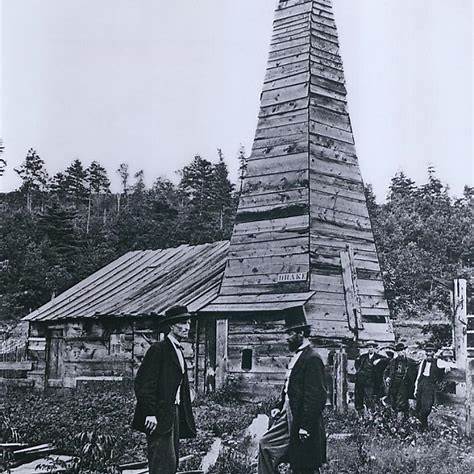Before oil powered empires and reshaped global politics, it existed as a quiet, curious presence—oozing from the earth, largely untouched by industrial ambition. The pre-1859 uses of oil were rooted in ancient ingenuity rather than modern machinery. From the bitumen-soaked bricks of Mesopotamian temples to the bamboo-drilled wells of ancient China, and the sacred salves of North America’s Seneca people, oil had long served humanity in unexpected ways. Let’s explores the overlooked legacy of oil before it became “black gold”—a time when its value lay not in engines, but in everyday survival, innovation, and ritual.

🌍 Crude Origins in Mesopotamia
Long before oil became the engine of modern civilization, it seeped quietly from the earth—thick, pungent, and mysterious. In the heart of ancient Mesopotamia, where the Tigris and Euphrates rivers gave rise to the world’s first cities, people collected oily black tar called “naphtha” from natural surface seeps. It wasn’t used for combustion, but for construction—waterproofing boats and buildings—and in early medicine.
As early as 4,000 BCE, this sticky material was more than a curiosity; it was practical, valuable, even sacred. In the Epic of Gilgamesh, oil was mentioned alongside divine forces. Long before geopolitics, pipelines, or petroleum dollars, crude oil already held a quiet, almost mystical power.
🎋 The Bamboo Pipelines of Ancient China
Thousands of years later and thousands of miles away, the Han Dynasty in ancient China (circa 1st century AD) harnessed oil and natural gas with a sophistication that still amazes historians. The Chinese drilled wells hundreds of feet deep using percussion drilling and lined them with bamboo tubing. They piped natural gas to salt works, where it was burned to boil brine—an early example of industrial energy infrastructure.
Though oil was not yet powering machines, it was already transforming industries. China’s innovations hinted at oil’s true potential: a reliable, scalable energy source.
🪶 Seneca Oil: North America’s Forgotten Black Gold
On the other side of the world, long before American settlers struck it rich, Native American tribes were familiar with crude oil’s surface seeps. In the region of western Pennsylvania, the Seneca people gathered oil for medicinal use—treating cuts and skin ailments—and as fuel for ceremonial fires.
When European settlers arrived, they observed the practice and began marketing it as “Seneca Oil”, a supposed cure-all sold in bottles by 19th-century peddlers. Ironically, it was on these same lands, steeped in indigenous knowledge, that the modern oil industry would explode into life in 1859.
🔥 An Energy World Without Petroleum
Before crude oil became king, the world’s energy diet was built on wood, whale oil, coal, and muscle power. Whale oil lit lamps in wealthy homes. Coal powered early steam engines and ironworks. Yet all of it came at a high price—labor-intensive, unsustainable, and increasingly inefficient as industrial demand grew.
Humanity was standing on the edge of an energy revolution, waiting for a new kind of fire.
🚩 1859: The Turning Point Approaches
In the sleepy town of Titusville, Pennsylvania, the pieces were falling into place. Technology was advancing. Demand for cleaner lamp oil was rising. And in the summer of 1859, a failed railroad conductor named Edwin Drake prepared to drill into the earth—not to search for gold or silver, but for something darker.
What he struck would transform the world.
